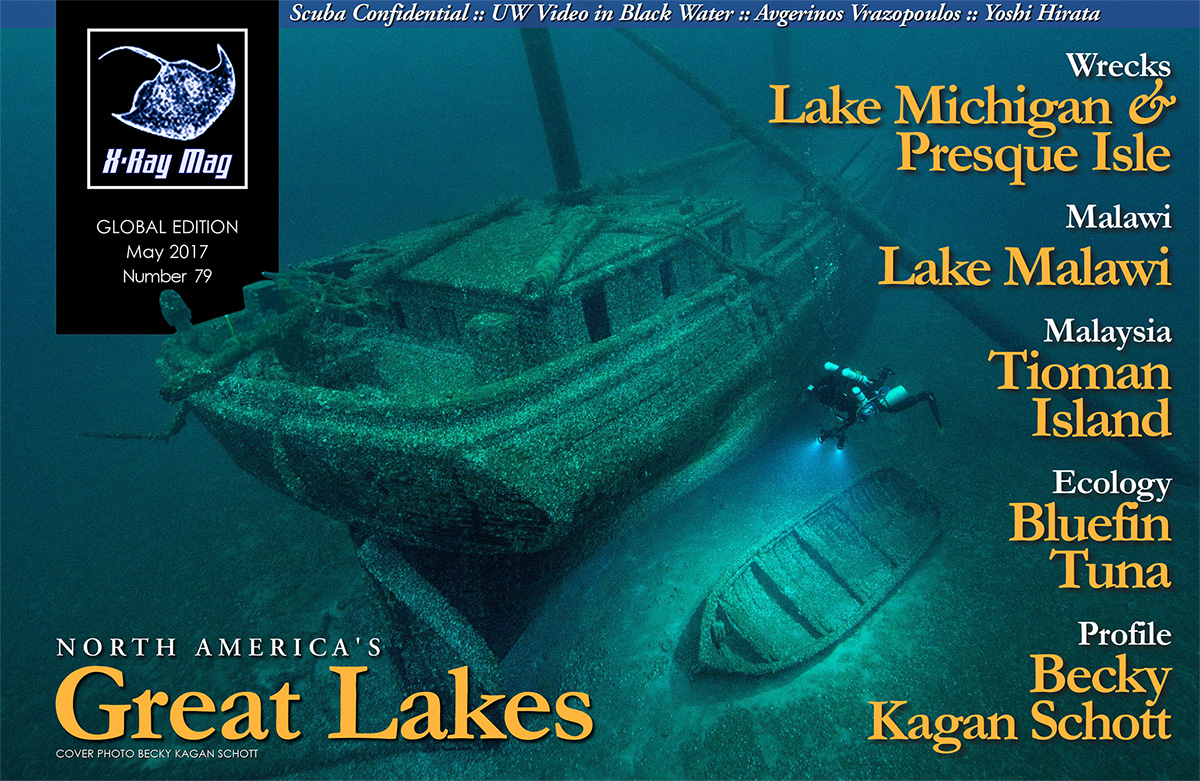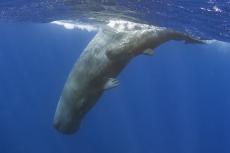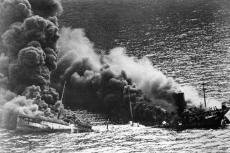The Atlantic bluefin tuna is one of the largest and fastest fish in the ocean. They are incredible swimmers. With bodies shaped like torpedoes, they are practically built for speed. Some species of tuna can swim as fast as 69kph (43mph). They are exceptional predators from the moment they are born, and they can live up to 40 years.
Contributed by
Factfile
Antonio Busiello is an award-winning photographer known for his focus on the relationship between humankind and the natural world.
A native of Italy, Busiello studied anthropology at the University of Naples, where he developed a deep interest in humanity and its cultural differences.
After university, he started traveling the world, concentrating on photography.
He lived in Central America for many years before moving to California and now resides in London.
Please visit: AntonioBusiello.com.
The Atlantic bluefin tuna (Thunnus thynnus) belongs to the Scombridae family. They are magnificent and impressive wild animals. They live in both the western and eastern sides of the Atlantic Ocean, and during springtime, migrate to the Mediterranean Sea to spawn. They were once present in the Black Sea as well, but not anymore.
Atlantic bluefin tuna migrate over huge distances—across oceans—and can dive more than 1,200m (4,000ft). Studies have found that tuna migrate from North America to Europe and back several times during a year. They are warm-blooded, so they have no problem living in both cold and tropical waters.
Their average size is around 2m (6.5ft), and they can weigh up to 250kg (550lbs). However, they can easily reach larger dimensions. In fact, one of the biggest tunas ever recorded was actually an Atlantic bluefin tuna, fished off the coast of Nova Scotia. It weighed 679kg (1,496lbs) and was approximately 3m (10ft) long.
Atlantic bluefin tuna has become one of the most valuable fish species in the world. In fact, in 2011, a record sale of a single bluefin tuna reached almost US$400,000, at a Japanese market. However, due to overfishing, the Atlantic bluefin tuna is now considered an endangered species by the International Union for Conservation of Nature (IUCN).
History
Because of the increase in demand for tuna meat worldwide (not just for sushi), a multibillion-dollar fishing industry for tuna has developed in the Mediterranean Sea. Historically, bluefin tuna fishing was an ancient Mediterranean fishing tradition. Homer and Pliny had described the fishing process as far back as 2,000 years ago. Centuries-old bluefin fishing traditions are found in both Italy and France. Of course, over the years, fishing techniques have changed and improved, and the old way of fishing is now only a tourist attraction.
Every year at the end of springtime, huge tunas migrate from the Atlantic Ocean to the warmer Mediterranean waters to spawn. In the old days, when the tuna was vast in numbers, fisherman used to place several kilometers of complex fixed-net systems, called tonnara, in the sea, along the migration path. The nets were like a corridor, with different big nets, called “rooms”, that directed the tunas into one single final big net called the “room of death.” The entire process used to last for months. Building and preparing the tonnara, putting the tonnara in the sea, waiting for the tuna, making sure that bad weather did not destroy the net system, and so on.
Everything was supervised by one very expert fisherman called the rais. Rais is a term from the Arabic language meaning “leader”. Arabian culture had a big impact on the Mediterranean region during their invasion in the 8th century AD, apparently also on tuna fishing techniques. The rais was a very important person who knew a lot about the sea, fishing, tuna and weather, and he was very much respected by all the other fishermen.
Religion also played an important role in bluefin tuna fishing. Every year, fisherman even decided which Saint would protect the fishing. While they fished, they sang very ancient religious songs, which they hoped would help them have a good fishing year.
When the rais decided that there was enough fish to start a mattanza (killing), the tuna fish were pushed into the final net—the room of death. Fishermen on little boats surrounded the room of death and started to pull the net from below, which made it smaller and smaller, the tunas started to get closer to the surface and the boats. At this point, all the fishermen started to kill the tunas and pull them aboard.
A mattanza could last for many hours, and when it was finished, all the tuna in the room of death were fished, and the sea was all red from tuna blood. During a good season, one single tonnara could have seven to eight mattanza. This was a very cruel fishing method. However, it was very selective and had much less impact on the environment, compared to today’s industrial fisheries.

Modern fishing techniques
The new way to fish bluefin tuna is much more invasive. Tuna are found in big schools by employing very sophisticated instruments, and in the past, even the help of airplanes. Sadly, bluefin tuna has been overfished for too many years, so much so that, as a result, it is now considered an endangered species by the IUCN.
The industrial fishing of bluefin tuna is now regulated by the International Commission for the Conservation of Atlantic Tunas (ICCAT), which sets the rules for the fishery. ICCAT started setting yearly catch limits, quotas that are assigned to each boat for how much they are allowed to fish. Each fishing boat must have a special fishing permit and must completely comply with ICCAT rules. Fishermen have to pay for an ICCAT inspector, who stays aboard during the entire fishing campaign, making sure that all the rules are respected. Tuna fishing boats cannot even leave the harbor without the ICCAT inspector aboard.
Since 2008, ICCAT rules have become even more restricted, limiting the fishing period to only one month per year, usually from May 15 to June 15, and the fishing boats that have a permit to fish tuna can still only capture a certain amount of fish.
Many complaints have been raised by fishers, especially about the period limit, which does not allow for bad weather. This means that when the fishing season is open, they only have 30 days to fish, and if sea conditions are bad, and boats cannot leave the harbor, there are no extra days they can get. Sometimes, the fishing boats stay in the harbor for days, reducing their chances to fish. They cannot use airplanes to help them find the tuna anymore, so they can only fish a certain amount of tuna per boat, and they cannot fish small tunas.
According to ICCAT, things are getting better for the Atlantic bluefin tuna. The industrial bluefin tuna fishing process nowadays, as I said, is very different from the past. Tuna are now caught alive, and sold still alive to a fish farmer. They are then farmed and fed with fine sardines for approximately four months before being killed and sold.
Ninety percent of bluefin tuna caught in the Mediterranean is bought by the Japanese, which come with their big industrial ships all the way from Japan. They check the killing of the fish, inspecting and pricing every single tuna before buying it. Then they go back to Japan with the precious fish, and sell it in Japan and abroad.
Embedded on the boat
I have spent 30 days on an Atlantic bluefin fishing boat, living with fishers and experiencing the entire tuna fishing process. The kind of fishing process used now is called fishing-seine and requires different boats, people and equipment.
They search for the tuna, sometimes for weeks. Once they find the tuna, they feed them at the surface to keep them in one spot. Then they surround them with a huge net. Right after this, they lock the bottom of the net to trap the tuna inside. Then they are sold alive to a fish farmer. The fish farmer keeps the tuna in another huge net, and with tow boats, takes the fish to the farms.
Bluefin fishing boats are equipped with every kind of very expensive modern device, in order to find the fish. However, fishers also search for tuna using the old way. They spend the entire day, until there is no daylight left, looking for the fish, using binoculars.
Many fishers have decided to be paid by commission on sales. They make money only if tuna is captured and sold. They can make more money this way, but they take on the risk of not getting paid if the fishing is not successful. That makes the atmosphere on the boat even more exciting and tense.
The entire crew is involved in the fishing process, and emotions are very intense. The more days that pass by without finding the fish, the closer they get to the deadline, the more tense the atmosphere on board is. Fishermen can also get very nervous when the deadline gets closer and closer—all they think about is finding the tuna. No tuna, no money—as their entire families live off the fishing season.

The role of divers
Once the tuna is caught, it needs to be quantified. As the tuna must be sold to the farm company still alive, it makes this process very difficult. A professional diver and underwater videographer dives into the cage and makes a first estimate to check the number and size of the fish. Once the fisherman and the ICCAT inspector agree that the tuna fished in the net meets the ICCAT quota and size, the fish are ready to be transferred to the fish farm company.
The fish farmer is notified by radio and a farming towboat comes. The farming net or cage is attached to the fisher’s net or cage, and divers then open a huge hole between the two nets. The fish are now ready to be transferred from the fisher-seller’s net to the farmer-buyer’s net.
When everything is ready for the transfer, the fisher’s boat pulls up the net from the bottom, reducing the space inside the net, the tuna get scared and start to swim from one cage to the other. The tuna are forced to go from one net to the other while professional divers film the passage. The video will be the only instrument the parties have during the sale, to decide the quantity, number and weight of the fish being transferred.
The fisher-seller and the farm owner-buyer can spend several hours watching and re-watching the video, arguing and trying to come up with a number, in order to close the sale. Sometimes, the poor visibility of the water or the bad quality of the video makes the count even more difficult.
Once trapped in the net, the tuna can only swim in a circle, even during their transportation from the fishing spot to the fish farm. Fish farms can be miles away from where the tuna is caught—Malta, Spain, Italy—all over the Mediterranean Sea. The transportation can last up to 40 to 50 days, since the boat has to travel at around 1.6kph (1mph), otherwise the fish will die.
Once a fishing boat meets its quota (the maximum amount of fish it is allowed to fish), fishers can usually have a little break before going home. During my residence on board, we spent a few days in Malta—the closest place to the fishing spot. The crew had some rest and enjoyed the island, while the fishing boat owner dealt with the fish farm owner regarding the last transactions of the sale. ■




















































